Some people have addictive personalities. They may be addicted to adrenaline, hitting targets or helping other people. They may be addicted to drugs, drink or self-defeating habits.
Some people get to a point in the lives where they make a decision. They may then choose to follow positive addictions rather than negative addictions.
Such people aim to channel their personalities rather than change their personalities. They aim to do things that have positive consequences – rather than negative consequences – for themselves and other people.
William Glasser described this approach in his 1976 book Positive Addiction. He showed how people could channel their energies into running, meditation or other beneficial activities.
If you wish, try tackling the exercise on this theme. This invites you to do the following things.
Describe a specific situation in the past when you chose to follow a positive addiction.
Describe the specific things you did to follow the positive addiction.
Describe the specific things that happened as a result of you following the positive addiction.
During my early career I worked in programmes for recovering addicts. People who wanted to become healthy sometimes chose to follow a positive addiction rather than a negative addiction. This called for helping them:
To clarify their personal or professional goals – their picture of success;
To clarify the positive patterns they could follow to increase their chances of achieving success;
To clarify and follow their specific action plan for achieving success.
Some people may object to this approach. They may say:
“Isn’t that just replacing one addiction with another? Shouldn’t the person be trying to find their true self?”
Perhaps, but it some people found it proved more helpful for themselves and others. Some developed a positive addiction for exercise or helping other people who were in difficulties. This called for them choosing:
To rehearse when they were going to do – particularly when faced by situations that might trigger negative habits;
To follow a set routine and get some quick successes;
To keep repeating this pattern and get positive results;
This approach calls for a person really wanting to turnaround their life. It can involve finding other ways to get their highs.
Some people with psychopathic tendencies, for example, may get a physical chemical reaction when they hurt others. Being cruel can give them the rush of feeling powerful. They become addicted to this approach and look for the next situation where they can get this kick.
Such people are often addicted to anger. They try to make themselves feel big by making others feel small. They not only want to win, they want others to feel they have lost.
Some people take another route. They get their highs by helping other people. The positive majority of people take this route. They love to encourage other people when acting as parents, educators, coaches, leaders, trusted advisors or playing other roles.
They love to nurture people. They care for others and, when faced by difficult situations, try to get win-win solutions. Such people want to plant seeds of hope that encourage both present and future generations.
Such people feel good after helping others. They can experience a rush, followed by a sense of calm. It is as if they have served something greater than themselves. They may experience the helper’s high.
Let’s return to your own life and work. Looking ahead, can you think of a situation where you may want to follow some of your positive addictions rather than negative addictions.
You may want to take care of your health, perform creative work or do another activity. You may want to help other people in your personal or professional life.
What are the positive addictions you may want to follow? What may happen as a result of taking these steps? If you wish, try tackling the exercise on this theme. This invites you to complete the following sentences.


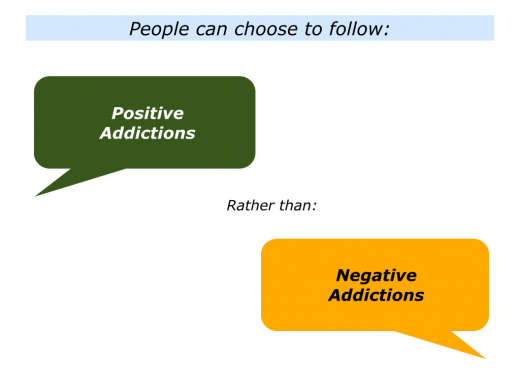
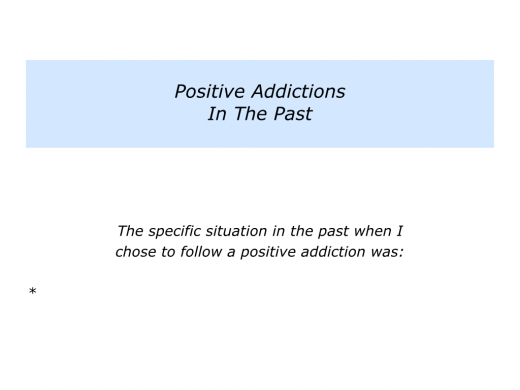
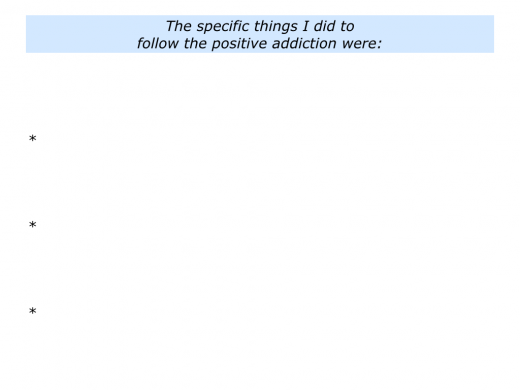
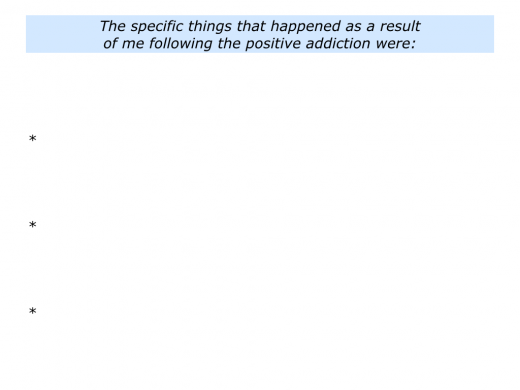
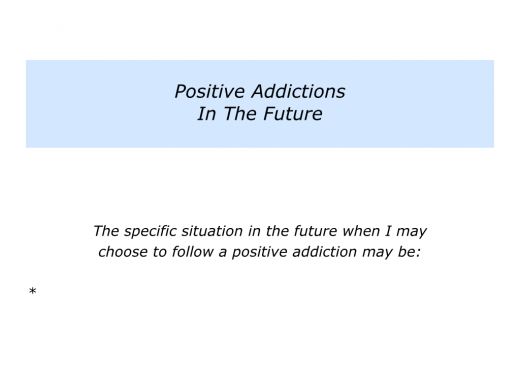
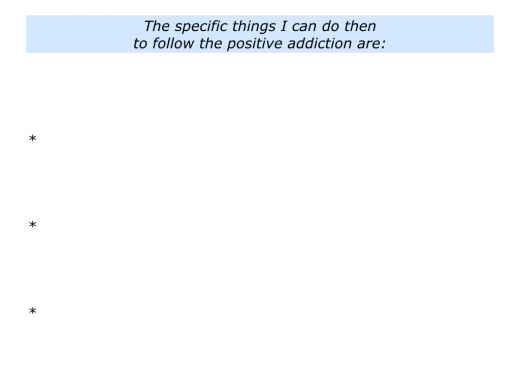
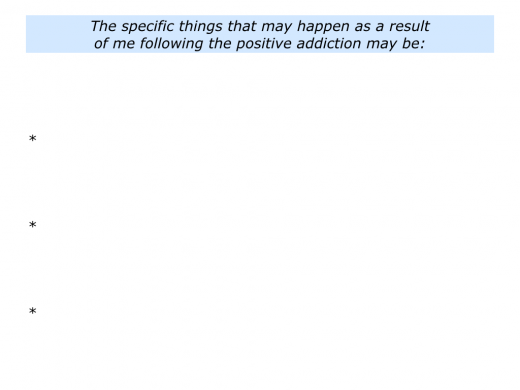




Leave a Reply